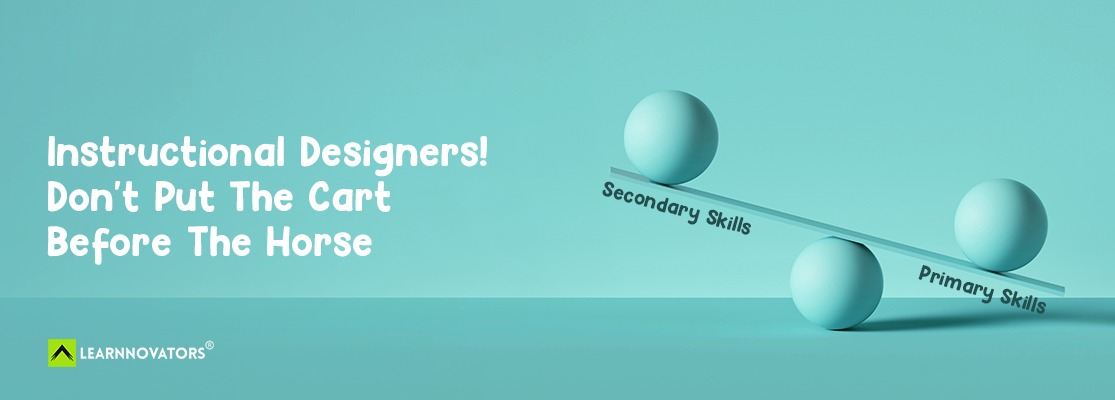I was in a meeting with an upcoming instructional designer. She had reached out on LinkedIn, asking if I could offer some guidance on the areas for her to focus on. A teacher transitioning into instructional design, she excitedly talked about what she’d learnt so far.
She had downloaded a trial version of Articulate 360, and was in the process of learning Storyline and Rise. She’d also dabbled with Adobe Photoshop a bit, and was keen to know what other tools she would have to learn to be considered an instructional designer.
I said, “…how about actual instructional design skills?”
She said, “What do you mean? What I’m learning is instructional design, right?”
No, my friend. I’m sorry to say that it’s not.
I have nothing against learning how to use these tools. In fact, I encourage my team to learn them whenever they can. However, the tools need to come after you’ve mastered the instructional design basics, not before.
What are these basics, you ask?
Well, in short, it’s the understanding of how people learn and the ability to use this understanding to design learning experiences. This involves a grasp of learning principles, cognitive psychology, behavioral psychology, design thinking, critical thinking, logical reasoning, communication, creativity, visualization, language, grammar and more.
Specifically at the macro level, an instructional designer should be able to examine a learning problem critically and identify a solution that would address the problem. They should consider the organizational goals as well as learners’ interests in doing so. At the micro level, they should have a good understanding of teaching methods, which they can apply appropriately in various situations. And then be able to translate their ideas into a storyboard, so that they can communicate their intentions to stakeholders, as well as to others on the team. And then they need the appetite and the ability to constantly seek learning and improvement in these areas.
It all sounds like a mouthful… these are indeed a complex set of skills that can take years, if not decades to master.
So what gives? If these ‘core’ skills take years to master, then how does it make sense to finish learning them before getting our hands on the tools?
When I say that the tools should come later, I don’t mean it chronologically. It’s okay to start playing around with the tools once you’ve got a hang of the bare basics, or even in parallel to learning them. But then, know that unless you have the ability to design courses as outlined above, your understanding of instructional design is not complete. Again, I’m not talking about just formal learning courses here… other forms of learning (such as informal learning) and performance support (such as job aids) fall under the ambit of instructional design too.
Learning the tools before learning the basics I’ve outlined above is a bit like a doctor trying to learn the names of medicines and their brands, before gaining an understanding of the human body and the characteristics of the disease. Yes, you need to know the types of medication and treatments available, which pharmaceutical companies are doing what in each area, but this knowledge should come after the fundamentals.
I understand the pull of the learning tools. It’s shiny, it’s exciting, and when you see a beautiful screen that you designed staring back at you, or an interaction working the way you intended, the tangible and tactile feedback you get can be thrilling. Plus, it’s always easy to sell. Your manager and other stakeholders can see what you’ve done right away.
Perhaps, more importantly, many organizations want their instructional designers to be proficient in these tools. The more tools you know, the merrier.
So, to make it easier for instructional designers hunting for a job, and also to introduce some excitement and variety into the learning process, let’s divide the skills into primary and secondary skills. The primary skills include the core abilities of an instructional designer… the ones I outlined above.
If you are expected to create courses, or lead the creation of courses to change behavior or attitudes, and / or improve performance, then these core skills are an absolute must.
Secondary skills include the tools that you want to learn, as well as other abilities like marketing your learning programs, administering an LMS, graphic design capabilities, project management, content curation, data awareness, and so on.
The more secondary skills you acquire, the better your chances of landing a job and growing in it. But you need the primary skills in order to be considered an instructional designer.
Written by Srividya Kumar, Co-Founder @ Learnnovators








